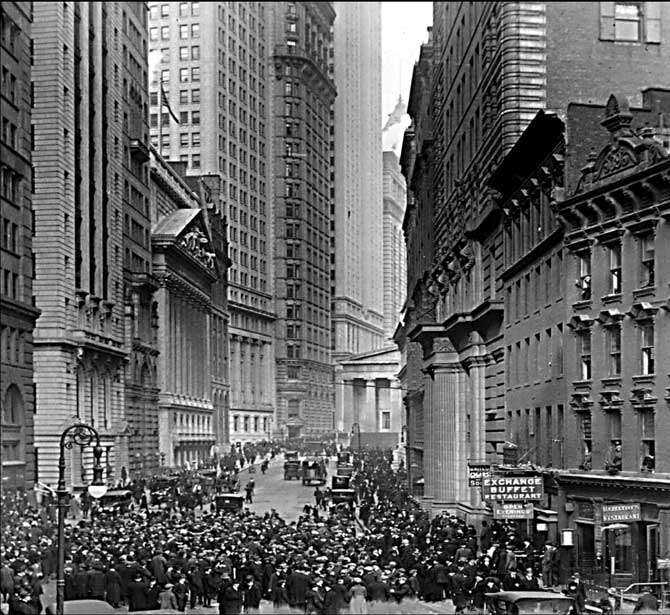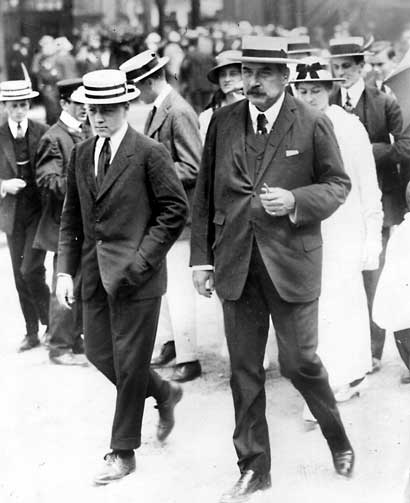Wall Street Crash of 1929
Black Tuesday on Wall Street. October 29, 1929.

Black Thursday, October 24, 1929 was the beginning of a “Perfect Storm” of economic
devastation for the United States when Wall Street stocks began an unexpected collapse that would affect banks, industry and working people. Many thought that the precipitous stock downturn the week of October 24th would lead to a strong recovery, but these hopes were dashed on what was forever called Black Tuesday, October 29, 1929, a day that precipitated a widespread panic and economic fall-out in the stock market with a record number of 16.4 million shares sold on that single day. Within a week, losses amounted to over 30 billion dollars—more than 10 times the national budget. Many feel the stock crash led to the Great Depression that started a few short months later. As a leading news photographer, Eddie Jackson documented some of the horrific events on film. “People were numb” reported Eddie, “they walked around like zombies—in a trance. Many had even borrowed money to invest in stocks. Now it was gone, along with their future and their security.” The really bad news was to come in 1930, the beginning of the Great Depression.

At the time of the stock market crash, New York City had grown to be a major financial capital of the world. The New York Stock exchange (NYSE) was also the largest stock market in the world during the roaring twenties—a time of high prosperity, deal-making and excess spending. During the heady years of the 1920’s many average Americans began to invest heavily in the stock market; opening margin accounts where ‘creative’ brokers were ending more than 2/3 of the face value of stocks that were sold, and earning high commissions from the new boon of eager novice stock traders. Over $8.5 billion was out on loan to the new stock buyers, more than the entire amount of dollar currency circulating throughout
the U.S. when the market crashed. The loans became due on demand. The only problem
was nobody had the money to pay their loans as their stocks were nearly valueless.
Somber stock traders on Wall Street reeling and in shock during the October 29, 1929 stock crash.



